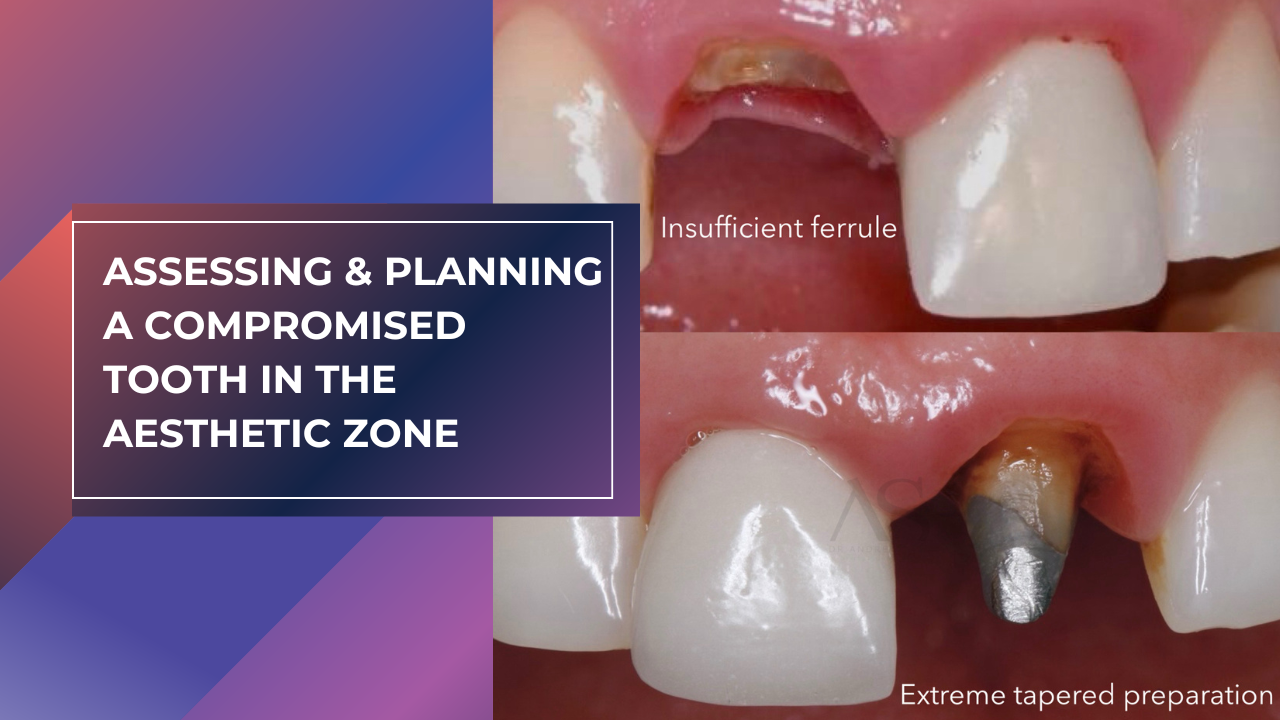Crack the Code to the Right Tooth Size
Feb 10, 2024
I'd like to share insights into a fundamental aspect of aesthetic dentistry that often takes center stage in achieving harmonious and natural smiles – assessing the size of the teeth.
Understanding the delicate balance of tooth proportions is an art that can transform an ordinary smile into a masterpiece. So where do we start? Recognising short anterior teeth. The average dimensions of an adult central incisor according to Magne 2003 has a width of 9.1mm and a length of 11.7mm. However, using general tooth dimensions does not take into account the differences in stature of the individual, the difference in size seen in male and female patients and the racial differences in dimensions. What I find is more useful and EASY to do is to use the central incisor crown width to length ratio.
The Width/Length Ratio:
- The Aesthetic Blueprint: Think of the width/length ratio as one of the first pieces of the smile assessment puzzle. It guides us in creating smiles that not only look beautiful but also blends in with facial features.
- Math Meets Art: While we won't dive into complex equations, understanding the basic principles of this ratio allows us to effortlessly determine the ideal size of the central incisors that simplifies the decision-making process in clinical practice.
Studies show that unworn central incisor teeth have an average ratio of 78%, in Caucasians and a ratio of 72% in Asians. What does this mean for us? Where we can start to diagnose short teeth is when the length of the central incisor becomes similar to the width. In other words, when tooth that assumes a square-like appearance.
The literature is scarce in pinpointing the precise threshold, but Magne 2022 gives us a starting point. He defines worn teeth with a ratio of 87%, providing a basis for labeling a tooth as short.
After establishing the diagnosis of a short central incisor, a decisive decision we then need to make is do we enhance it’s length through incisal edge addition or apical relocation of the gingival margin via surgery? This decision-making process is pivotal, as merely extending the length without a comprehensive understanding of underlying factors may yield aesthetically poor outcomes and give the patient the dreaded 'bucky' appearance. Furthermore, it has the potential to negatively impact occlusion by modifying the jaw’s guidance pattern and restricting the envelope of function. This is all before we have even touched on changing the patient's speech. No one will ever thank you for giving them a lisp.
Sign up for my emails where we will dive into other fundamentals that will help you in aesthetic dentistry.
The information contained in this blog post and podcast is based on Andrew See’s own experiences, views and knowledge and Andrew See and Dental Mastery Academy Pty Ltd do not guarantee that any particular outcome (including clinical outcome) will be achieved from using any of the information contained in this material. The material is for personal use only and not to be copied, reproduced, re-used, published, communicated, adapted, or used to create derivative works from or commercially exploit the materials; distribute, sell, licence or otherwise all or any part of the materials. © Dental Mastery Academy Pty Limited ABN 23 665 239 510.
Join Our Network of High Performing Dentists
Get aesthetic tips that help you avoid trial and error, straight to your inbox.
We hate SPAM. We will never sell your information, for any reason.




